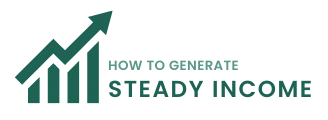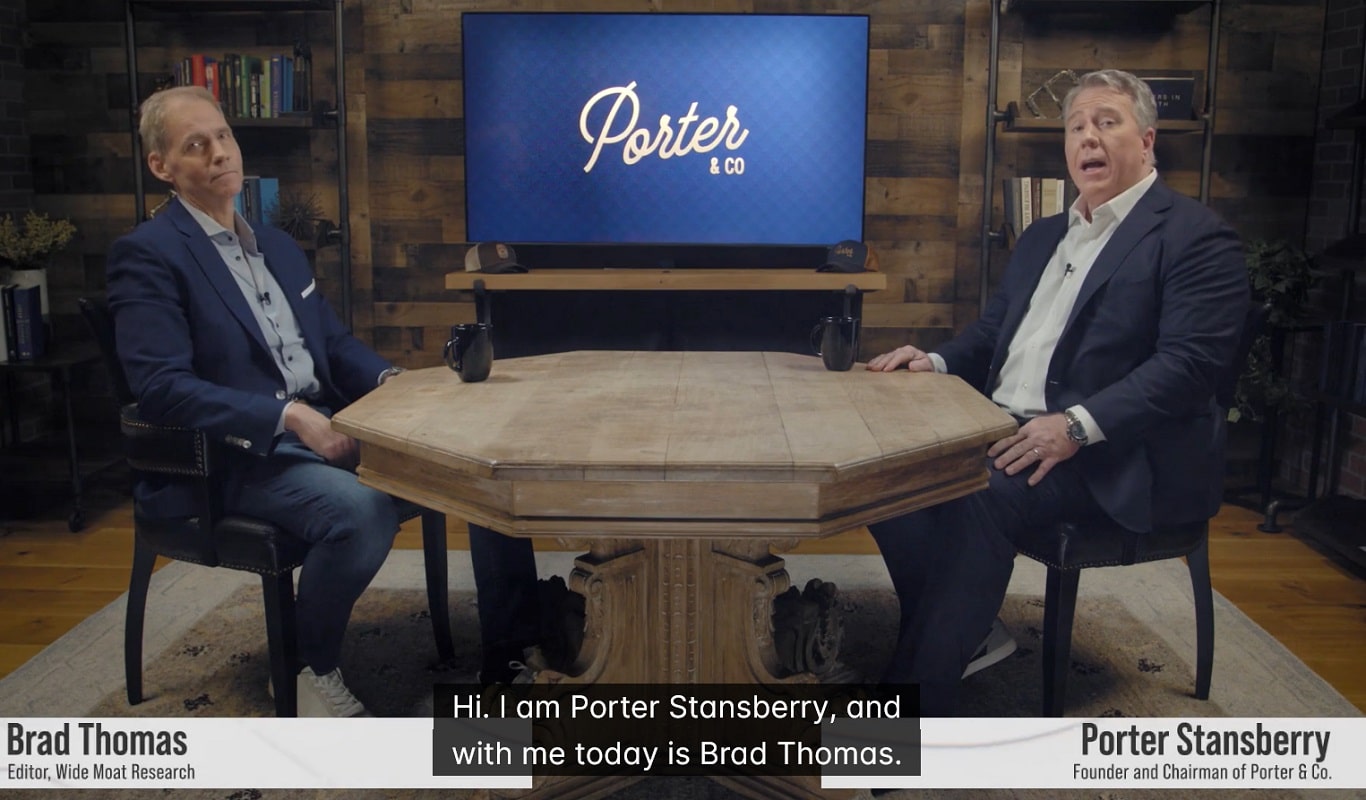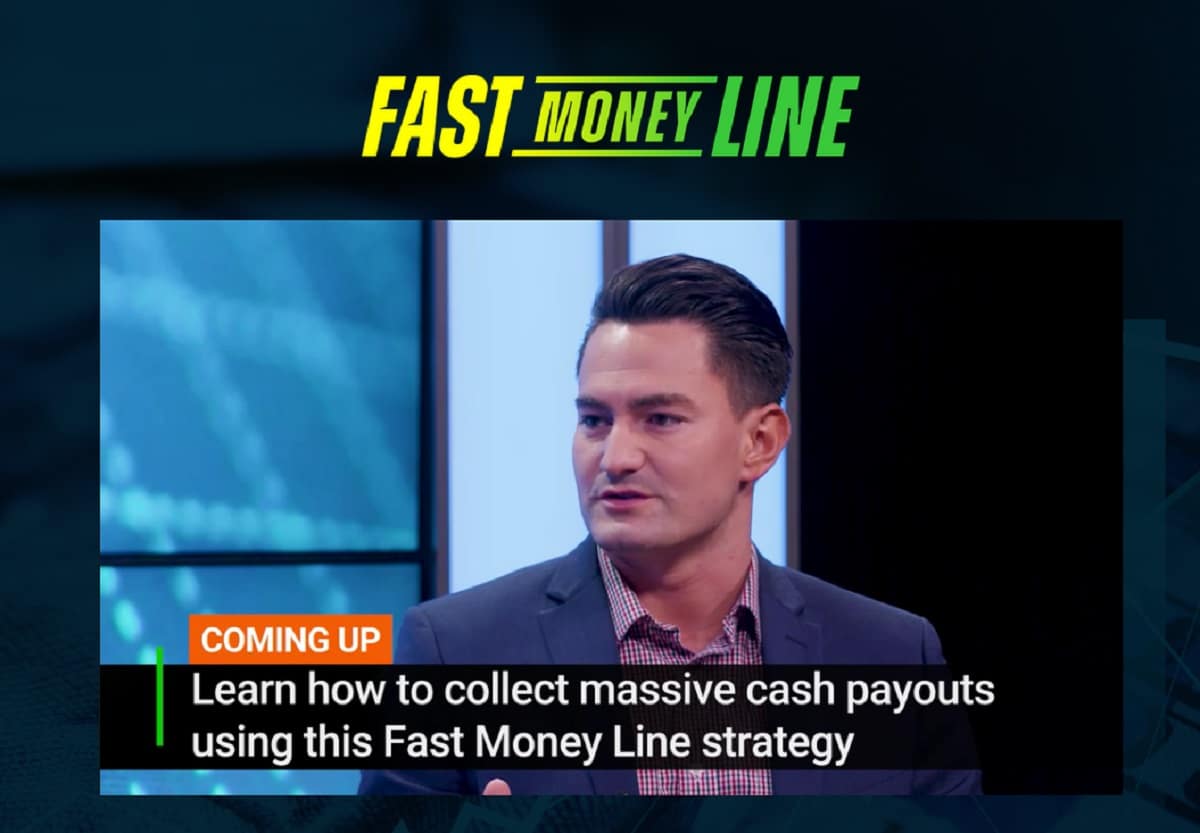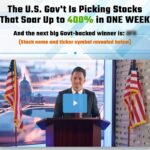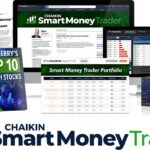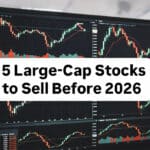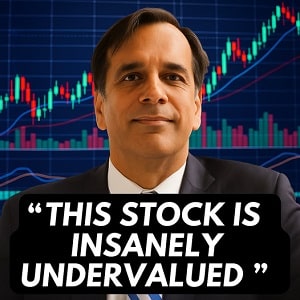In a dramatic video presentation hosted by Porter Stansberry of Porter & Co., alongside Brad Thomas, a self-proclaimed Trump insider, a startling narrative unfolds: President Donald Trump is orchestrating a deliberate “controlled demolition” of the U.S. economy.
Titled an “urgent briefing,” the discussion alleges that Trump, re-elected with a mandate to “Make America Great Again,” is instead preparing to tank financial markets as early as April 30, 2025, to save the nation from a deeper crisis inherited from the Biden administration. This reset, they claim, could wipe out millions of investors while offering a rare chance to build “generational wealth” for those in the know.
Recommended:
 “A Crash of Epic Proportions Is Coming – Prepare Now”
“A Crash of Epic Proportions Is Coming – Prepare Now”
50-year stock market legend Marc Chaikin just revealed his “secret weapon”… along with a powerful, little-known strategy that could help you potentially lock in rapid returns – even as markets crumble. Marc says that in the coming months, you are going to need it. So if you have any money in the market, you need to see this now.
Introduction: A Bold Claim About America’s Financial Future
The presentation, rich with insider anecdotes and historical parallels, paints a picture of a financial reckoning that’s both terrifying and tantalizing. Stansberry, a libertarian financial analyst, and Thomas, a Trump loyalist and economic advisor, argue that this plan—kept secret from the public but hinted at by Trump’s actions—mirrors past economic resets, like the railroad bust of 1873 or Reagan’s early-term recession. They pitch a report, Trump’s Secret Stocks, promising to reveal six companies poised to thrive amid the chaos, available for $199 alongside a year of Thomas’s Wide Moat Letter.
But is this a credible warning or a slick sales pitch? This article dives into the presentation’s claims, analyzing its economic assertions, historical references, and investment advice, while exploring the broader implications for Americans.
The Core Claim—Trump’s Controlled Economic Crash
A Radical Strategy Unveiled
At the heart of the presentation is the assertion that Trump is intentionally forcing a market crash to reset the U.S. economy. Thomas, claiming a decade-long friendship with Trump and a role as his economic advisor, says the President believes this is the “only way forward” to address a “terminal” economy left by Biden. Stansberry adds that Trump’s actions—escalating trade wars, imposing tariffs, firing federal workers, and pushing deportations—are part of a “master plan” to trigger this reset early in his term, ideally within six to twelve months, as hinted by Treasury Secretary Scott Bessent.
The duo likens this to a “cultural burning,” a practice used by indigenous tribes to clear dead wood and foster new growth. Trump, they argue, aims to burn away Biden’s economic “rot”—a $36 trillion national debt, annual $2 trillion deficits, and a hollowed-out private sector—blaming it on his predecessor while setting the stage for a recovery by 2028.
Evidence or Speculation?
The presentation cites Trump’s own words, like “there’ll be a little disturbance, but we’re okay with that,” and cabinet hints about a “detox” or “rebalancing,” as proof. They point to policies like the crypto strategic reserve and mass deregulation as signals of this reset. However, no official White House statement confirms this radical intent. The lack of public documentation—admitted by Stansberry and Thomas—raises questions about whether this is insider knowledge or creative interpretation.
Economists might argue that crashing markets deliberately contradicts Trump’s pro-growth rhetoric. Yet, the presentation counters that this aligns with his deal-making mindset: take short-term pain for long-term gain, much like a real estate mogul buying distressed assets cheap. Whether this holds up depends on how one interprets Trump’s early 2025 moves, which, as of April 2, remain in flux.
To watch Porter Stansberry and Brad Thomas The Trump Reset presentation – click here
Historical Parallels—Lessons from the Past
The Railroad Bust of 1873
To bolster their case, Stansberry and Thomas draw on the Panic of 1873, triggered by the Coinage Act’s removal of silver from the money supply. They describe how overinvestment in railroads, fueled by easy credit, collapsed when liquidity dried up, bankrupting a quarter of rail companies and spiking unemployment to 14%. Yet, visionaries like Carnegie, Rockefeller, and Morgan capitalized on the chaos, buying assets at fire-sale prices to build empires.
This analogy suggests Trump’s reset could crush overvalued sectors (e.g., tech, consumer giants) while rewarding those who invest in undervalued “new winners.” The historical fit is compelling—both eras feature speculative bubbles and government intervention—but the modern economy’s complexity, with global supply chains and digital markets, may limit the comparison’s precision.
Reagan’s Recession and Recovery
A more recent parallel is Reagan’s early 1980s recession. After inheriting Carter’s stagflation, Reagan’s policies—tax cuts, deregulation, and tight monetary control under Fed Chair Paul Volcker—sparked a downturn, with unemployment hitting 10% and GDP shrinking nearly 2%. Yet, by 1984, a boom followed, with stocks like Walmart soaring 4,500%. Trump, they argue, is following this “Reagan playbook,” aiming to trigger a crash now to ensure a golden era by his second term’s end.
This resonates with Trump’s MAGA ethos, but Reagan’s success relied on specific conditions—high inflation to tame, a Cold War backdrop—that differ from 2025’s debt-driven challenges. Still, the promise of a post-crash surge aligns with their wealth-building pitch.
The Economic Critique—Biden’s Legacy and Trump’s Plan
Biden’s “Rotting Carcass” Economy
The presentation excoriates Biden’s tenure, claiming he masked a dying economy with $8.5 trillion in debt, fake job growth (41% government jobs), and manipulated GDP figures. They cite real wages dropping 1.5% after inflation, surging consumer debt, and social fallout—crime, overdoses, and youth despair—as evidence of decline. The Atlanta Fed’s GDP projection falling from 4% to -1.5% and plunging consumer confidence reinforce their dire outlook.
These critiques echo conservative talking points, and some data checks out: U.S. debt did hit $36 trillion by late 2024, per Treasury reports, and private-sector job growth lagged post-COVID. However, Biden’s defenders might argue stimulus averted deeper collapse, and “recession” redefinition debates were semantic, not substantive. The presentation’s one-sidedness risks overstating the rot to justify Trump’s radical fix.
Trump’s Reset Toolkit
Trump’s alleged tools—tariffs, deportations, deregulation, and a crypto reserve—aim to disrupt markets while planting recovery seeds. Lowering interest rates via a forced Fed hand (projected $10 trillion balance sheet expansion) and securing billions in private investment from Apple, TSMC, and SoftBank are cited as catalysts for a post-crash boom. The Department of Government Efficiency (DOGE), led by Elon Musk, is framed as a key driver, slashing bureaucracy to boost private-sector vitality.
This aligns with Trump’s 2024 campaign promises, but execution remains speculative. Tariffs could spark inflation, not deflation, and mass deportations might shrink labor pools, not stimulate growth. The presentation assumes flawless coordination, which history—like Reagan’s uneven recovery—suggests is optimistic.
The Investment Pitch—Trump’s Secret Stocks
Six Companies to Watch
The heart of the sales pitch is Trump’s Secret Stocks, a report detailing six companies allegedly tied to Trump’s inner circle, poised to soar post-reset. Examples include:
1. California Oil Field: A dormant 3,000-acre site, bought cheap by a Trump-backing Texan, set to revive under pro-drilling policies, with potential 1,000% returns.
2. Biotech Innovator: Owned by a Trump confidant, it buys shelved drugs cheap, fast-tracks FDA approval, and could double or more.
3. Healthcare Disruptor: Linked to Trump’s son-in-law’s family, it’s primed for privatized healthcare growth, targeting a 3x gain.
4. MAHA Drinks: Backed by Wall Street Trump allies, it’s expanding into Walmart, trading at 1x sales versus peers’ 5x.
5. AI Energy Play: A “dirty energy” firm critical to Trump’s AI leadership push.
6. Financier’s Gem: Tied to a reclusive billionaire behind Trump’s Treasury pick.
These stocks, they claim, are undervalued because their Trump connections aren’t widely known, offering a “once-in-a-lifetime” chance.
Risk vs. Reward
Stansberry and Thomas urge viewers to raise cash now, selling overvalued tech (e.g., AI stocks), government-dependent firms (e.g., Boeing), and consumer giants (e.g., Apple, Starbucks). They warn of a rough ride—30-50% market drops—but promise exponential gains for those who buy these “secret stocks” pre-crash. Historical resets, they note, minted millionaires from ashes, citing Walmart’s 4,500% post-Reagan run.
The pitch is seductive but risky. Insider ties don’t guarantee success—political favoritism can backfire—and market timing is notoriously hard. Their past wins (e.g., Texas Pacific Land up 2,700%) lend credibility, but past performance isn’t a crystal ball. The $199 price, plus a free year of Wide Moat Letter, sweetens the deal, but it’s still a bet on their narrative’s accuracy.
Analyzing the Motive—Warning or Marketing?
A Public Service or Sales Tactic?
Stansberry and Thomas frame this as a patriotic duty, breaking silence to save Americans from financial ruin. Thomas risks Trump’s trust, they say, while Stansberry’s independence bolsters their objectivity. Yet, the hard sell—$199 for Trump’s Secret Stocks, upselling The Big Secret on Wall Street—suggests a profit motive. Porter & Co.’s business model thrives on such reports, and fear-driven marketing is a financial newsletter staple.
Their track record—predicting America’s oil boom, GE’s debt implosion—adds weight, but the lack of falsifiable specifics (e.g., exact crash dates beyond “soon”) and reliance on insider claims without hard proof tilt this toward speculation. It’s a hybrid: a plausible warning wrapped in a commercial package.
Who Benefits?
If true, Trump’s circle—already moving money, per the duo—stands to gain most, alongside early adopters of their advice. The masses, unaware or skeptical, face the fallout. This elitist undertone clashes with their populist rhetoric, raising ethical questions about exploiting insider knowledge for profit while preaching salvation.
Recommended:
 Crisis Alert: Our No. 1 Recommendation in the Face of Financial Turmoil
Crisis Alert: Our No. 1 Recommendation in the Face of Financial Turmoil
There’s no sugarcoating it anymore: For stocks and the economy, things could soon go from bad to worse. But for ONE strategy (outside of stocks), it’s about to become a field day… because it actually works BETTER in a recession and a possible stock market crash. It’s a way to see income and capital gains with LEGAL obligations during this period – on a reliable schedule and with a 93% win rate since the pandemic. Because of these extreme market circumstances, we’re reopening an extraordinary invitation to see it in full here.
Stansberry and Thomas’s presentation is a high-stakes gamble: Trump is either a visionary torching a broken system to rebuild it stronger, or their narrative is an exaggerated sales pitch riding his coattails. As of April 2, 2025, no crash has hit, but economic indicators—debt, confidence drops—lend some plausibility. Their historical analogies and investment ideas intrigue, yet the lack of concrete evidence and heavy marketing cast doubt.
For readers, the choice is stark: buy into their vision, cash out of risky assets, and bet on “Trump’s Secret Stocks,” or dismiss it as hype and stay the course. The truth may lie between—a real economic shift, but not the apocalyptic reset they sell. Whatever Trump’s plan, one thing’s clear: in markets, as in politics, timing and information are everything. Will you act, or wait and see?
FAQ: Trump’s Secret Economic Reset
What is Trump’s alleged economic reset?
The reset refers to a claim by Porter Stansberry and Brad Thomas that President Trump is deliberately planning to crash the U.S. financial markets early in his term, as of April 2, 2025. They argue it’s a “controlled demolition” to fix a broken economy inherited from Biden, paving the way for a recovery and a “golden era” by 2028.
Why would Trump want to crash the economy?
According to the presentation, Trump believes the economy is “terminal” due to $36 trillion in debt, $2 trillion annual deficits, and fake growth under Biden. By triggering a crash now, he aims to clear out the “rot,” blame his predecessor, and rebuild stronger, much like a controlled forest burn fosters new growth.
Is there proof Trump is planning this reset?
No direct proof exists—no official statements confirm it. Stansberry and Thomas cite Trump’s hints (e.g., “a little disturbance”), cabinet remarks (e.g., “economic detox”), and policies like tariffs and deportations as evidence. Critics see this as speculation, not hard fact.
What historical events support this idea?
They point to the 1873 railroad bust, where a market collapse led to wealth for visionaries like Carnegie, and Reagan’s early 1980s recession, followed by a boom with stocks like Walmart soaring 4,500%. These suggest a crash can reset and reward the prepared.
What are ‘Trump’s Secret Stocks’?
These are six companies allegedly tied to Trump’s inner circle, pitched in a $199 report. Examples include a California oil field set to revive, a biotech firm fast-tracking drugs, and a healthcare company linked to Trump’s family, all claimed to offer huge returns post-reset.
Should I sell my stocks now?
Stansberry and Thomas advise raising cash by selling overvalued assets like tech (e.g., AI stocks), government-reliant firms (e.g., Boeing), and consumer giants (e.g., Apple) before a crash. They warn of 30-50% drops but say it’s a personal call based on risk tolerance.
How credible are Stansberry and Thomas?
They have a mixed track record. Stansberry predicted America’s oil boom and GE’s debt issues, while Thomas claims successful 5G stock picks (e.g., Broadcom up 490%). However, their fear-driven sales pitch and lack of specifics raise skepticism about this claim.
What’s the risk if I follow their advice?
You could sell assets too early, missing gains if no crash occurs, or buy their recommended stocks, which may not perform as promised. Market timing is tricky, and insider ties don’t guarantee success. The $199 report is low-risk, but the strategy isn’t.
Could this reset really create ‘generational wealth’?
Possibly, if their historical parallels hold. Past resets minted millionaires from cheap assets post-crash. They claim their “secret stocks” could rise 1,000% or more, but it hinges on Trump executing this plan and markets reacting as predicted.
Is this a scam or a genuine warning?
It’s likely a mix of both. The economic critique and historical analogies have merit, but the hard sell of Trump’s Secret Stocks and lack of verifiable evidence suggest a marketing tactic. It’s a plausible theory packaged for profit, not a proven conspiracy.
When might this crash happen?
They suggest it’s imminent—potentially by April 30, 2025, or within six to twelve months from early 2025, per Treasury Secretary Bessent’s hints. However, they admit the exact timing is uncertain, only that it’s “soon” and possibly underway.
How can I prepare for this reset?
They recommend raising cash now, avoiding vulnerable stocks, and buying their six “secret stocks” detailed in the report. They also offer a free year of Thomas’s Wide Moat Letter for income-focused strategies, urging action before markets shift.
Does the article endorse this theory?
No, it analyzes the claims without fully endorsing or debunking them. It highlights credible elements (e.g., debt concerns) and risks (e.g., speculative timing), leaving readers to decide based on the evidence presented.
Who benefits most from this reset?
If true, Trump’s inner circle—already moving money—and early investors in their stocks stand to gain most. The unprepared masses could face losses, creating a divide between the “in-the-know” elite and average Americans.
What if I ignore this warning?
You might miss a crash and lose 30-50% of your portfolio, as they warn, or avoid unnecessary panic if it’s overhyped. The article suggests weighing the risks yourself, as the reset’s reality and impact remain unproven as of April 2, 2025.
